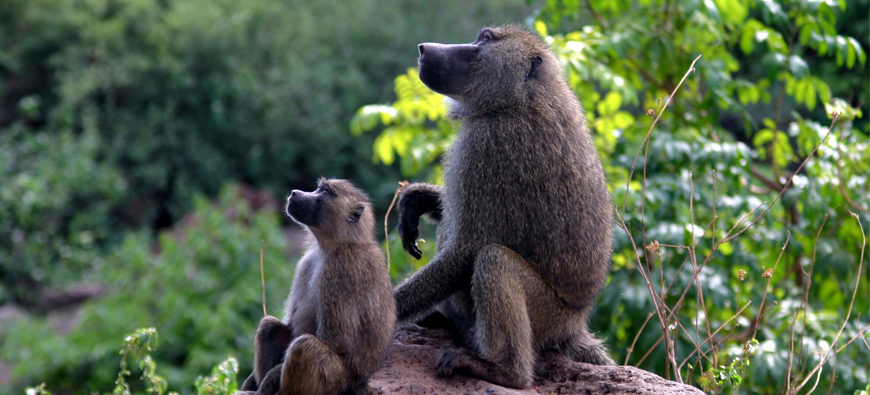Evolution of Personality: Genetic Variation

Evolution of Personality: Genetic Variation
Human personality differences may seem natural and obvious, but the individual differences that underlie personality pose an unobvious and deep mystery. Human psychology is a product of natural selection, a process which typically makes traits universal, and eliminates major genetic variation (e.g., human anatomy is so universal and consistent across people that one book, Gray’s Anatomy, describes us all). The variation inherent in the individual differences of personality, thus presents a paradox: How can a process which eliminates variation, lead to universal dimensions of variation across people?
We define personality traits as aspects of an individual’s behavior or their responses to stimuli that are constant and consistent across various situations. As it turns out, these stable differences show high levels of heritability (Plomin et al., 2011) (i.e., genetic differences play a major role in generating personality differences[1]), and these different modes of behavior can have fitness implications. For example, in animal models, various ‘traits’ are linked to differences in foraging, detecting and evading predators, fighting off disease, courting mates and successfully reproducing -- traits affect what we want and how we get it. So, why don’t we all simply want the same things, and try to get them in the same ways? Typically, any trait that is genetically linked and beneficial to an organism will spread, such that in a very short amount of time every organism in a species has that trait. This process is known as directional selection, in which traits become fixed within the population, without huge amounts of variation. But this typical result of evolution, doesn’t seem to apply to personality traits. In contrast, we see large amounts of variation. Furthermore, we see complicated combinations, or profiles of traits in almost every individual.
There are only three possible explanations for the maintenance of such genetic variation: balancing selection, mutation-selection balance, or neutral genetic drift. Neutral genetic drift occurs when genes have no fitness consequences, so the genes are in a sense “invisible” to natural selection. Mutation-selection balance occurs when so many genes code for some trait, that even though there is directional selection for improving that trait in some way, the mutation rate of the genes underlying the trait balances out the selective forces trying to improve the trait, generating a kind of treadmill effect, which keeps the trait constant. Balancing selection can occur through different kinds of evolutionary processes, with frequency-dependent selection perhaps being the best known (frequency dependent selection is why humans come in two sexes in a 50-50 ratio). Without going into the nitty gritty details, we will simply say that the genetic variance underlying personality traits is most likely a product of balancing selection [2] (see this paper by our very own Geoffrey Miller if you want to know more).
So why didn’t evolution give us fixed traits that are just perfectly flexible so that we would have the perfect response to every situation? Why have stable traits at all? It all comes down to tradeoffs, namely between responding quickly and responding accurately. Imagine there is a monkey in a forest. It hears a sound. It stops and analyzes the situation but by the time he’s determined it’s a leopard moving in the leaves, the poor primate has become leopard lunch. Now imagine that same monkey runs away from every single sound he hears. This would be extremely energetically costly and would not leave him much time to forage, sleep or find mates. The monkey must settle upon some intermediate combination as the extremes are both costly, and thus not favored.
This example highlights the evolutionary need to have some ingrained reaction that you can always rely upon -- a sort of psychological reflex system that is at once “readily accessible but necessarily imperfect” (Hinde, 2013). This example can also illustrate why you might expect variation: some monkeys live in forests with lots of leopards (and so should be overly cautious), while others live in forests with relatively few (and so should be a bit more brave). This is personality. This is why we need to view behavior on the individual level. As we move through our daily lives, we all carry around a unique set of personality traits, a unique profile of chronic motivations that are activated by different environments. An evolutionary perspective reveals the intriguing mystery that personality traits pose, and simultaneously reveals how they have been designed to provide us all with our own unique motivational profile.
[1] Throughout this blog post we use the term "individual differences" a bit loosely. Such individual differences in traits are necessarily a product of both genetics and environment, but this post only deals with genetic differences. See our next blog post on the evolution of personality in terms of environment and development for other factors that are important for creating these individual differences.
[2] More recent work indicates that variance in the genetics underlying personality may also be a product of mutation-selection balance to some extent, see http://www.matthewckeller.com/Verweij.et.al_Evolution_2012.pdf

